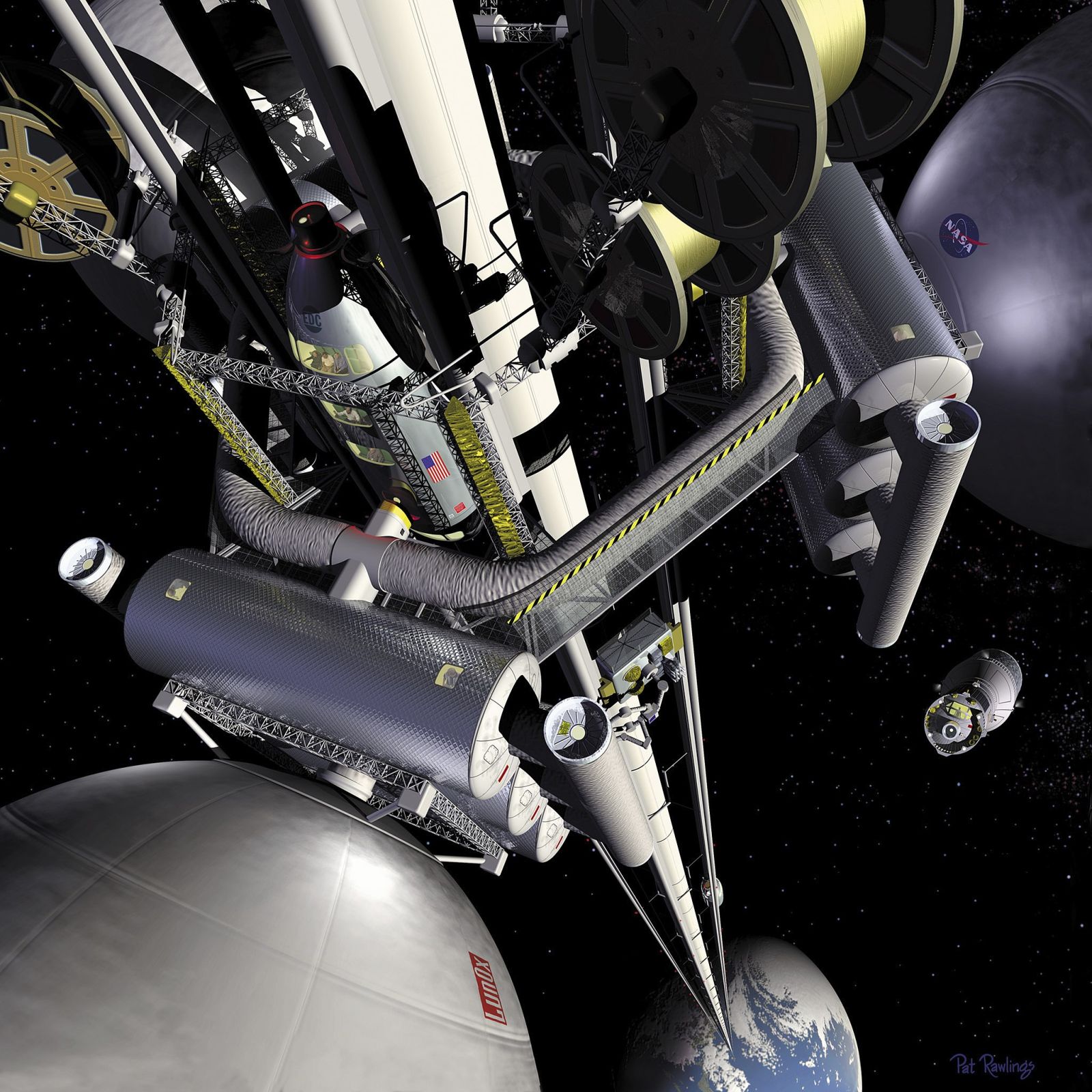Follow us on Google News (click on ☆)

NASA Image
Rockets, despite their effectiveness in placing objects into orbit, face high launch costs, often exceeding $10,000 per kilogram of payload, totaling around $60 million per launch. In light of these figures, the space elevator emerges as a potential solution, promising to significantly reduce these costs.
The principle of the space elevator is based on an extremely long cable, extending from Earth to an altitude higher than geostationary orbit, approximately 22,236 miles (about 35,786 kilometers) above the Earth's surface. At this altitude, a satellite serving as a counterweight would stabilize the cable, exploiting the tension created by Earth's gravitational force and the centrifugal force due to the planet's rotation.
Alberto de la Torre, Assistant Professor of Physics at Northeastern, points out that the major challenge lies in the realization of such a cable. Conventional materials like steel cannot withstand the tension imposed by such a structure. However, promising materials such as boron nitride nanotubes, diamond nano-wires, and graphene, known for their low density and high tensile strength, could offer a solution.
The space elevator, while not yet moving beyond the concept stage, with several design attempts and even a design awarded a significant prize, still faces significant technical obstacles. Nonetheless, the appeal of the space elevator persists, promising a drastic reduction in the cost of reaching orbit, potentially to a few hundred dollars per kilogram, compared to the current thousands.
The continuing evolution of materials science, space technology, and engineering keeps hope alive for a future where the space elevator could become a reality, transforming humanity into a truly spacefaring civilization. Until these advancements come to fruition, the space elevator remains a source of inspiration for science fiction enthusiasts, all the while embodying the promise of more accessible and economical space exploration.